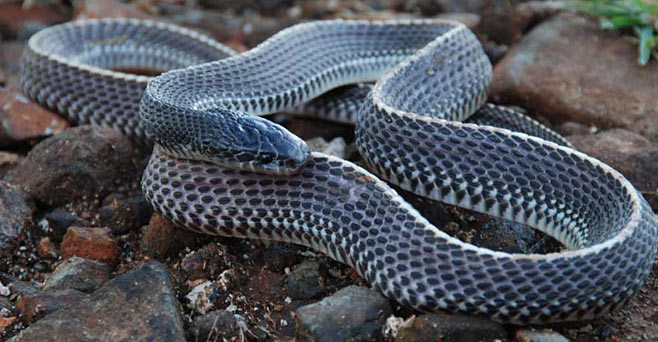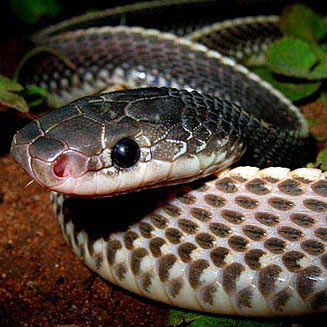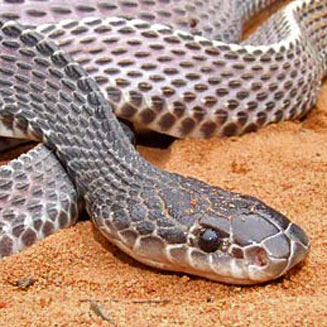|
Mehelya capensis (Southern file snake, Cape file snake)
Driekantigeslang, Vylslang [Afrikaans]; umHlangwe [Zulu];
Ndara, Mhunzamusha [Shona]
Life >
Eukaryotes
>
Opisthokonta >
Metazoa
(animals) > Bilateria > Deuterostomia >
Chordata >
Craniata > Vertebrata (vertebrates) > Gnathostomata (jawed vertebrates) >
Teleostomi (teleost fish) > Osteichthyes (bony fish) > Class:
Sarcopterygii (lobe-finned fish) > Stegocephalia (terrestrial vertebrates) >
Tetrapoda
(four-legged vertebrates) > Reptiliomorpha > Amniota >
Reptilia (reptiles) >
Romeriida > Diapsida > Lepidosauromorpha > Lepidosauria >
Squamata > Serpentes
(snakes) > Family: Colubridae > Subfamily:
Boodontinae > Genus: Mehelya
 |
|
Mehelya capensis (Southern file snake, Cape file snake),
North West, South Africa. [A. Jackson ©, from
SARCA Virtual Museum] |
 |
 |
|
Mehelya capensis (Southern file snake, Cape file snake),
KwaZulu-Natal, South Africa. [B. Maritz ©, from
SARCA Virtual Museum] |
Mehelya capensis (Southern file snake, Cape file snake),
Limpopo, South Africa. [G. Tomsett ©, from
SARCA Virtual Museum] |
Identification
The Southern file snake can be identified by its triangular
shape, its keeled (rough) scales, a light coloured vertebral stripe, pink skin
between the scales and its nocturnal lifestyle. It grows to an average length of
1.2 meters but may reach up to 1.75 meters in length.
Distribution and habitat
The distribution of this snake includes KwaZulu-Natal, Limpopo,
southern Mozambique, Zimbabwe and the Caprivi strip. Its preferred habitat is
lowland forest or moist savanna.
Food
Predominately eats other snakes (including black mambas and
puff adders) but also eats
rodents,
lizards and
toads.
Predators, parasites and disease
Eaten by other snakes.
Reproduction
Oviparous (egg-laying), lays between 5 and 13 eggs and
often more than one clutch during a summer.
Longevity
The lifespan of this snake is likely to be between 15 and
20 years.
Medical importance
Non-venomous and not dangerous to humans and very unlikely
to bite.
Links
References
-
Broadley, D.G. 1983. FitzSimons' Snakes of Southern
Africa. Delta Books, Johannesburg.
-
Marais, J. 2004. A Complete Guide to Snakes of
Southern Africa. Struik Publishing, Cape Town.
|
